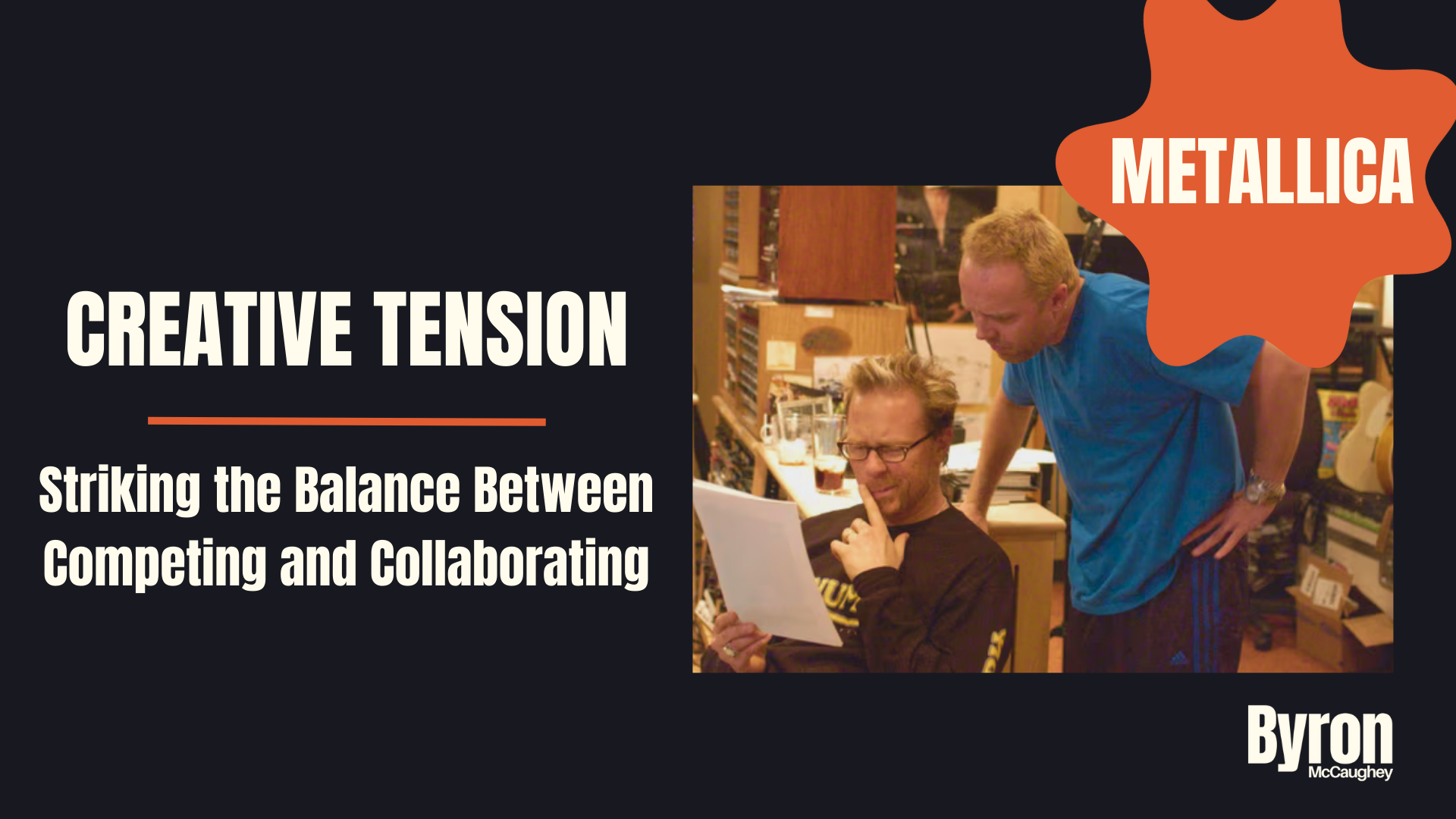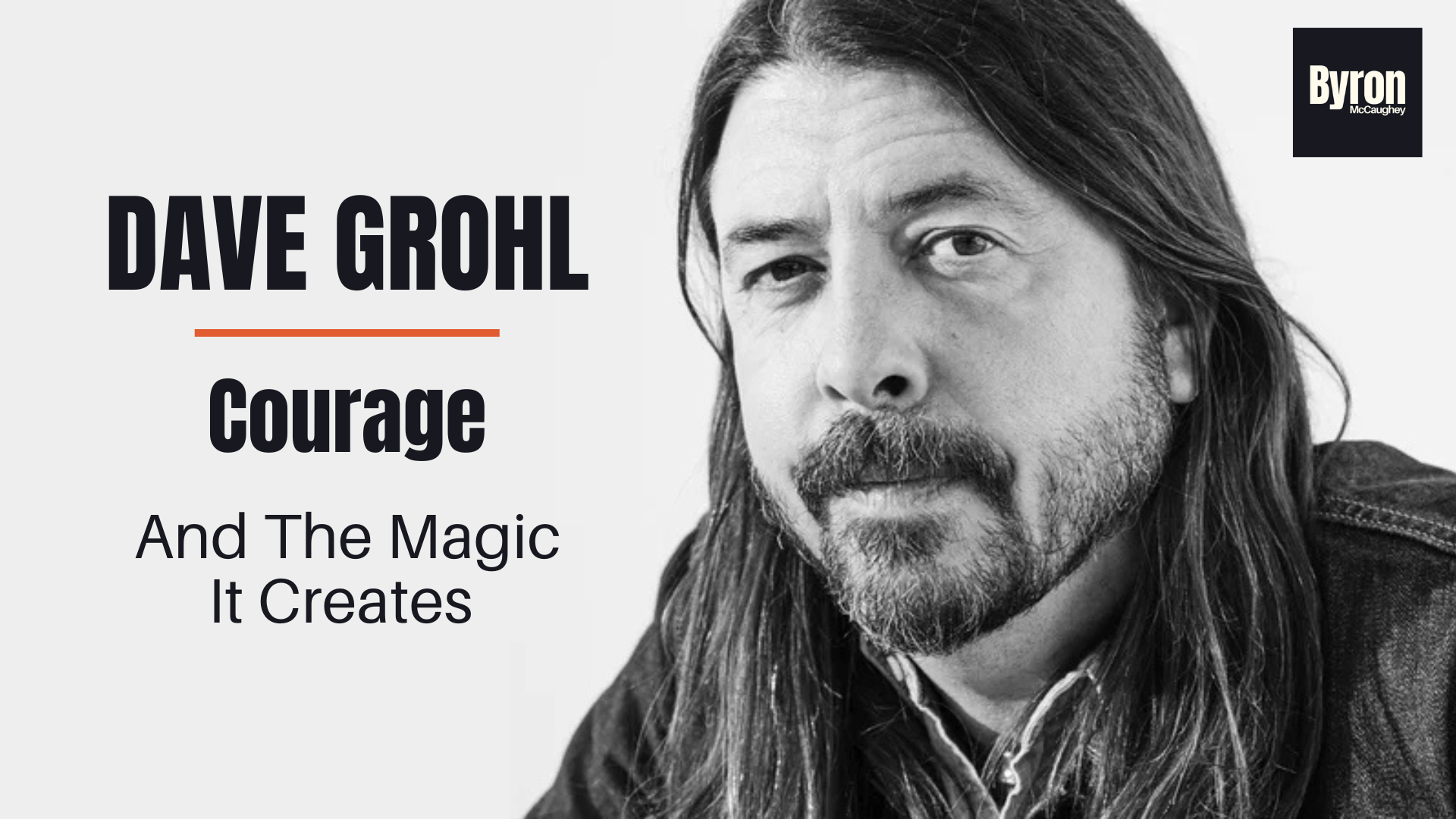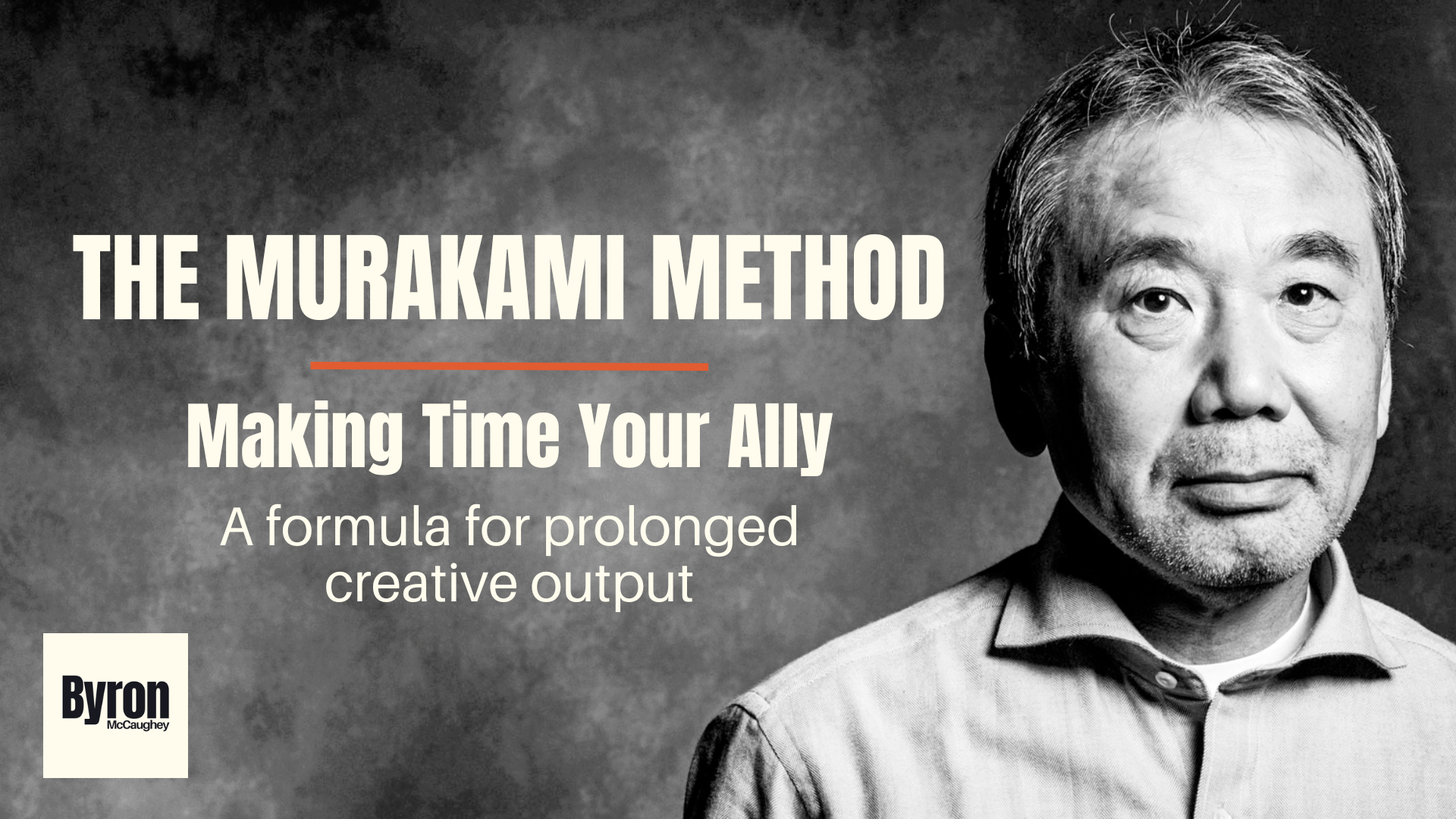It’s early 2000s and Metallica are well established heavy metal gods. But progress on their highly anticipated new album St. Anger is plagued with issues, including creative tension between frontman James Hetfield and drummer Lars Ulrich.
Ulrich reflects during an early recording session for the album: “It’s like I’m racing against time… it’s a weird ass fear that I have to come up with something really quick before someone comes up with something for me… and then if I don’t like it or 100% embrace it, then I’m just being a selfish insular asshole.”
This raw admission lays bare the tension that so often arises when people come together to generate ideas—the pull between competition and collaboration. Creative group dynamics can be tricky, whether you’re in a startup founding team, a corporate project, or jamming in a band.
Competition is a great motivator, encouraging individuals to push their boundaries and strive for better ideas and solutions—we all love being the one who came up with the big idea. Collaboration pools different skills, knowledge and perspectives, often leading to better ideas.
Both competing and collaborating have a place when creating in groups—but how do we strike the right balance?”
Define a Shared Vision
Collaborative creativity works best when there is a clear why. What is your group trying to achieve, and is everyone on the same page? An agreed north star for creative decision making ensures your group doesn’t lose its way.
Before embarking on St. Anger, Metallica created the ‘Metallica Mission,’ a one-page handwritten document that focused on Metallica being a family, rather than a collection of individuals. This document was the foundation for their creative process.
Recognise Your Fears
Acknowledge the fears, doubts and insecurities that a group dynamic can trigger: “If I don’t come up with ideas, people will think I’m useless.” “I’m losing my creative touch.” “Rejection will prove I’m not creative.”
There’s nothing wrong with thoughts like this; they are just thoughts. The issue comes when we become fused with them, believing them as truths, causing reactive behaviour like rejecting others’ input, pushing ideas that don’t serve the goal or conversely, not contributing at all.
James Hetfield has written some of the most famous heavy metal songs of all time but still feels the weight of creative pressure: “I feel guilty that I’m not inspired all the time, especially when everyone else is… I was dreading the whole process.”
Create Psychological Safety
Psychological safety allows teams to thrive by creating an environment where everyone feels free to contribute without fear of judgment or retaliation. This boosts collaboration and improves the quality of competition as ideas get challenged and refined constructively.
For your group, this might look like setting the expectation that all ideas are welcome, even if not all will be used, or fostering a culture of active listening during brainstorming sessions.
In creating St. Anger, Metallica adopted a new songwriting process in which everyone contributed to the lyrics rather than only Hetfield writing them.
Lead guitarist Kirk Hammett reflected on this shift: “We are all working on the same creative wavelength, and it’s inspiring to me. I can further express myself with these lyrics now that James has opened that door.” This approach led to Hammett penning the line “My lifestyle determines my death style,” featured in the album’s opening track.
Metallica released St. Anger in 2003. Fans were divided—some loved its raw intensity, while others were less enthusiastic about the experimental sound. Regardless of opinion, the album debuted at #1 in 30 countries and remains a testament to the band’s willingness to adapt their creative process.
Tinkering with group dynamics can be challenging—the human element ensures that. But it’s worth the effort for a chance to create something memorable. So, what tweaks can your group make to find the sweet spot between competing and collaborating?
Part of Short Tales of Psychology—a series about interesting humans and the psychological lessons we can apply to enhance our mental wellbeing and optimise performance.
Photo credit: James Hetfield & Lars Ulrich from Metallica by Annamaria DiSanto (‘Some Kind of Monster’ documentary).







